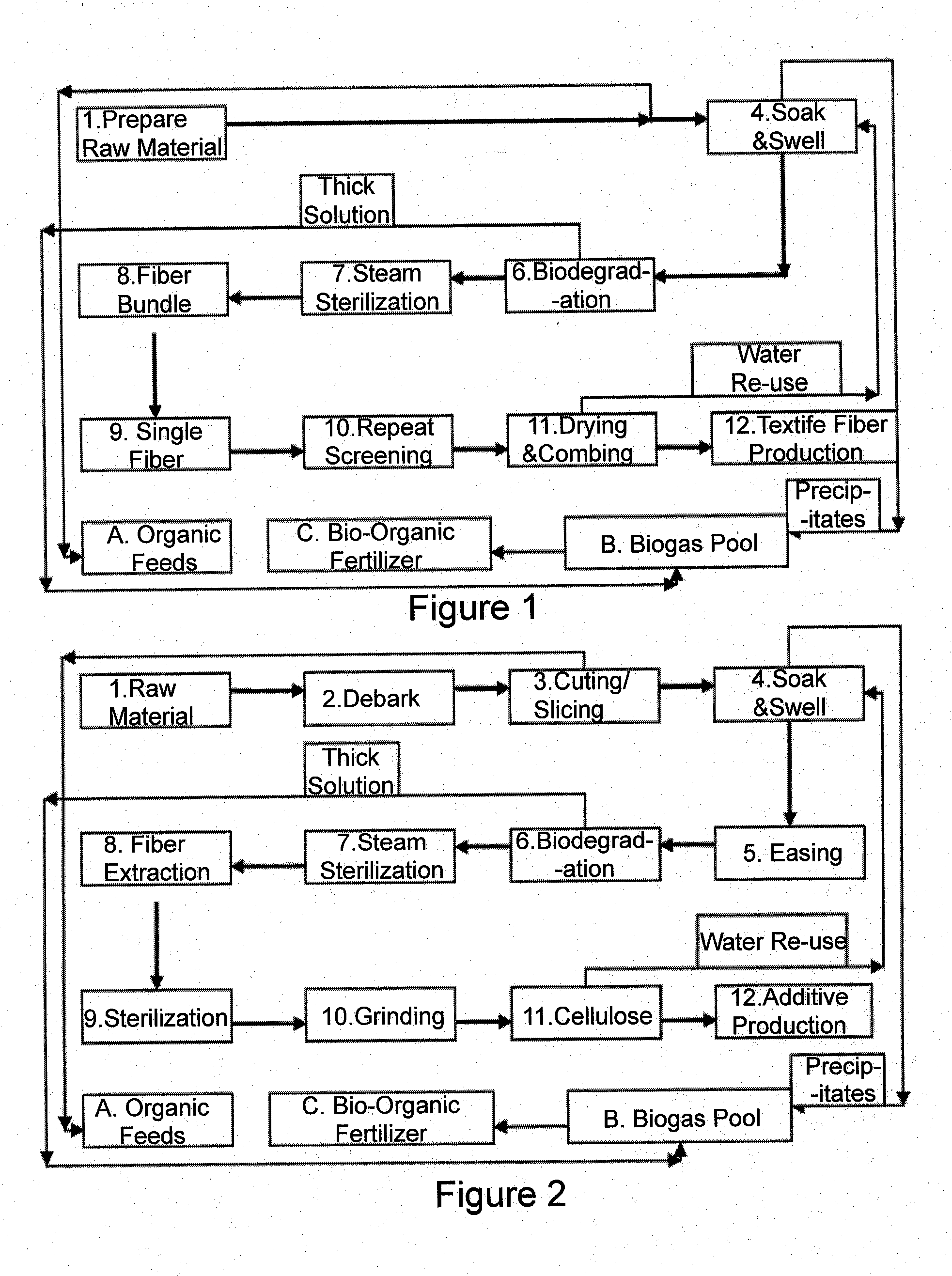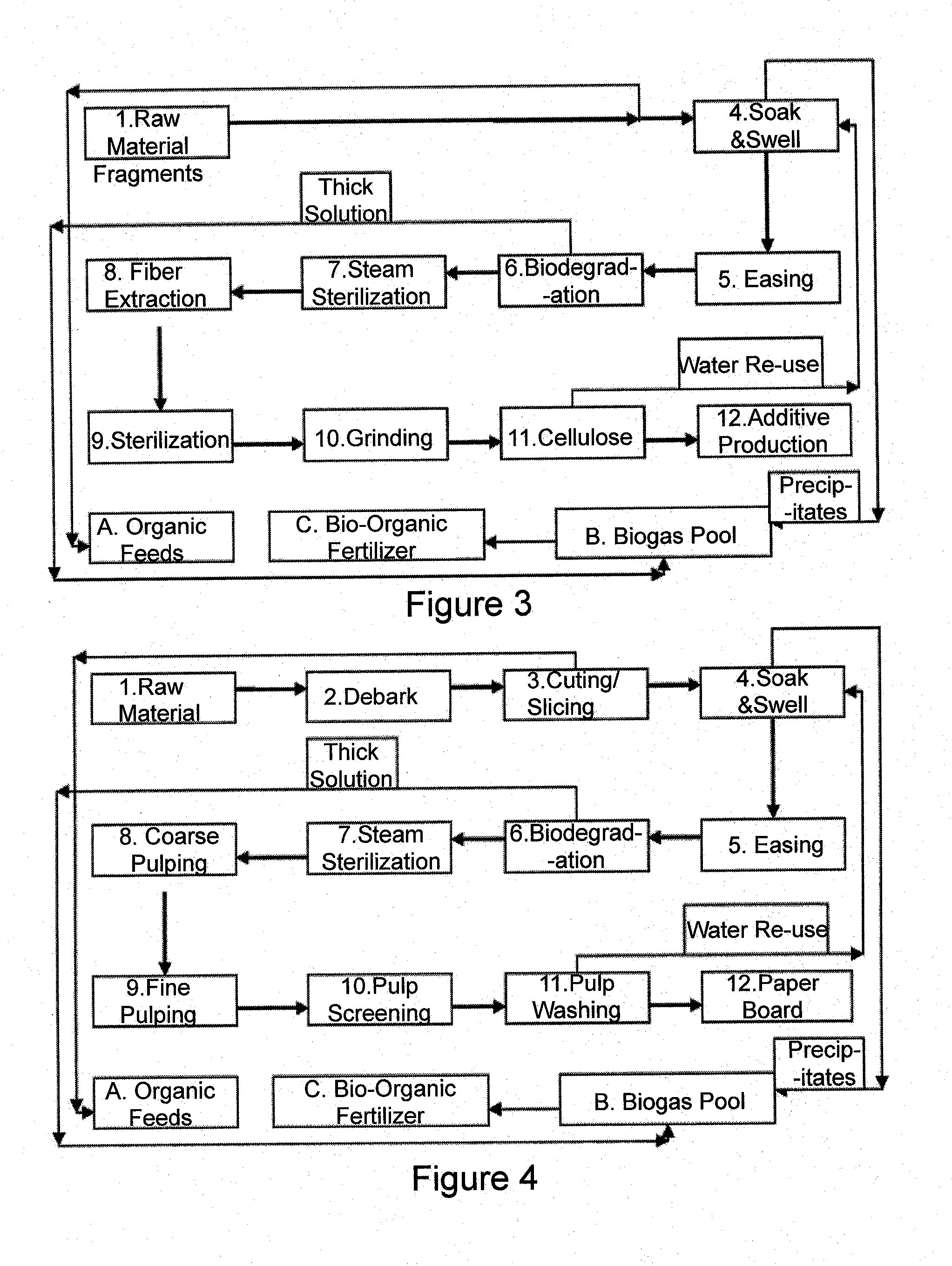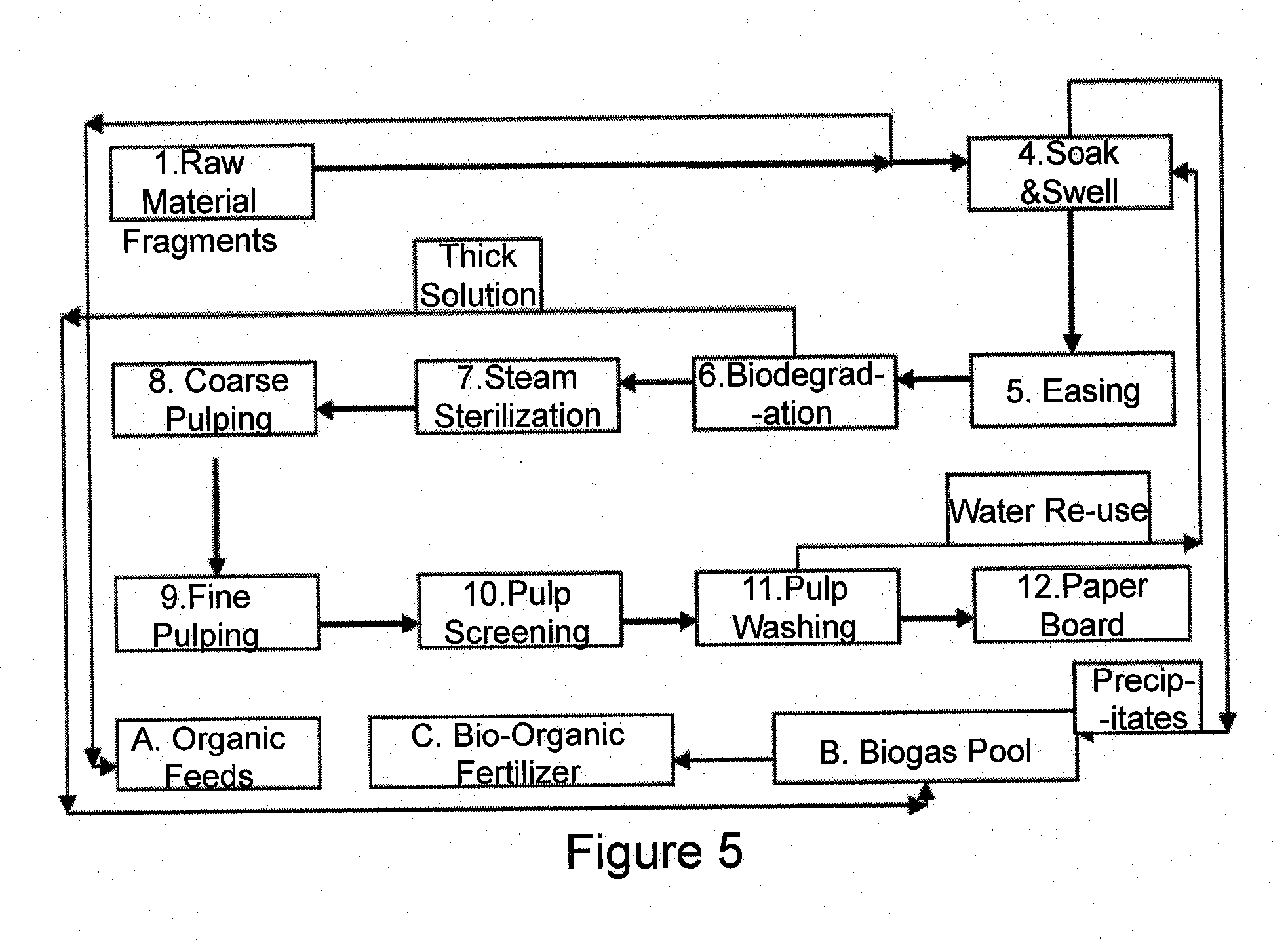Wickerhamonyces anomalus CGMCC#5975 and Its Application Thereof
a technology of wickerhamonyces and anomalous, which is applied in the field of wickerhamonyces anomalus cgmcc#5975 and its application, can solve the problems of destroying the land, lowering the air permeability of fabric made from hemp fiber, and not easy to fibrillate hemp fiber, etc., and achieves the effects of reducing production costs, reducing emissions, and reducing pollution
- Summary
- Abstract
- Description
- Claims
- Application Information
AI Technical Summary
Benefits of technology
Problems solved by technology
Method used
Image
Examples
example 1
The Preparation of a Bacteria Culture Solution
[0037]One or more bacteria species as described herein have been deposited on Apr. 6, 2012 into the China General Microbiological Culture Collection Center (CGMCC, located at No. 3, Division #1, Beichen West Road, Chaoyang District, Beijing, China). The deposit numbers are Bacillus sp. Deposit No. 5971, Rheinheimera tangshanensis Deposit No. 5972, Acinetobacter Iwoffii CGMCC Deposit No. 5973, Pseudomonas fluorescens CGMCC Deposit No. 5974, and Wickerhamomyces anomalus Deposit No. 5975. The bacteria used herein in a bacteria culture solution can include at least one Bacillus. Sp. under CGMCC Deposit No. 5971, Rheinheimera tangshanensis under CGMCC Deposit No. 5972, Acinetobacter Iwoffii strain under CGMCC Deposit No. 5973, Pseudomonas fluorescens under CGMCC Deposit No. 5974, and Wickerhamonyces anomalus under CGMCC Deposit No. 5975 and their combinations thereof, either alone or in the presence of one or more other bacteria.
[0038]For exa...
example 2
Extraction of fibers from flax
[0043]A method of making fibers by using flax as an example of raw materials: a bacterial culture solution is prepared according to a desired weight ratio. As an example, a complex bacterial flora is prepared in a weight ratio of Bacillus:Rheinheimera tangshanensis:Acinetobacter Iwoffii: Pseudomonas fluorescens:Wickerhamomyces anomalus at a weight ratio of 3:1:1:2:3.
[0044]According to the embodiments of FIG. 1, the process of fiber extraction generally includes three phases: a preparation phase, a fiber-manufacturing phase and a by-product generating phase.
[0045](A). A preparation phase: from Step 1 (prepare raw material) to Step 4 (soak & swell.
[0046]The flax raw material was harvested, prepared, and then soaked & washed with cold water in a soaking, wetting, retting pool or tank so as to first wash away any dirt and other debris on the surface of the raw materials. The flax raw materials were soaked with water at natural temperature until the flax raw...
example 3
Extraction of Celluloses from Ramie
[0059]The preparation process is similar to those described in Example 2, except that the ratio of a complex microbial flora bacterial culture was configured as followed. As an example, a complex bacterial flora is prepared in a weight ratio of Bacillus:Rheinheimera tangshanensis:Acinetobacter Iwoffii: Pseudomonas fluorescens:Wickerhamomyces anomalus at a weight ratio of 3:1:2:2:2. During biodegradation, the weight ratio of the treated raw materials and the bacteria culture solution is 1:7. The physical properties and measurements of the obtained fibers are shown in Table 1.
PUM
| Property | Measurement | Unit |
|---|---|---|
| Temperature | aaaaa | aaaaa |
| Time | aaaaa | aaaaa |
| Time | aaaaa | aaaaa |
Abstract
Description
Claims
Application Information
 Login to View More
Login to View More - R&D
- Intellectual Property
- Life Sciences
- Materials
- Tech Scout
- Unparalleled Data Quality
- Higher Quality Content
- 60% Fewer Hallucinations
Browse by: Latest US Patents, China's latest patents, Technical Efficacy Thesaurus, Application Domain, Technology Topic, Popular Technical Reports.
© 2025 PatSnap. All rights reserved.Legal|Privacy policy|Modern Slavery Act Transparency Statement|Sitemap|About US| Contact US: help@patsnap.com



